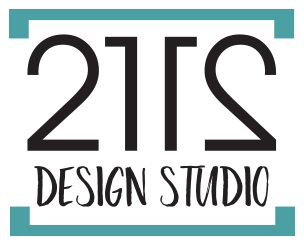The Cast Iron-y of a New Kitchen
/Are you going through cast iron piping woes in your house? Are you having to reinvent the way you drain your kitchen sink or your washing machine “temporarily”? You are not alone. It feels like a very lonely and desperate place when you are trying to figure out the steps to mitigate your slippery -and smelly underground problem! After many nerve wrecking sleepless nights fretting the crumbling sewage piping underneath your cast away home, I recommend for your mental health to look for the silver lining of the problem the Universe has put before you. Cast Iron piping gone rouge is no joke, especially when it’s in your kitchen/ laundry area. I have found that envisioning what your new space will look like helps keep your mind away from the worries of adjusters, lawyers and insurance agencies that are out of your control and taking forever to respond.
Let’s dream, but more importantly plan, so when the time comes around to go head first into the renovation project you are ahead of the game and ready to tackle your project like a pro. Here are 4 kitchen tips and questions to ask yourself before demolition rolls around.
1. Layout & Floorplan
Measure your kitchen and draw up a floorplan, include window and door placements. This would be a good time to move that door to improve flow, change the swing of its opening or open up the window to allow more natural light in. Think about if the current placing of your stove, fridge and kitchen sink make sense in the space. Pro Tip: Keep in mind the triangle rule. From center point of each item -sink, fridge and stove- they should form a triangle with legs no less than 4 feet or more than 9 and the total of all three legs should be between 13 and 26 feet. Lastly, do you have a stubborn wall you’ve been dreaming of opening up to add more kitchen counter to your space? Go for it! Remember that planning a layout ahead will give you time to keep a healthy budget, your expectations positive and attain the style that you envision.
2. Cabinets
When estimating your budget, after plumbing and electrical, the cabinet line item will be a significant part of your budget. However, it is very important as it will give character and style to your kitchen. There are three main cabinetry styling choices to keep in mind: cabinet door styles (flat panel, raised panel, slab, mullion), wood species (cherry, maple, red oak, hickory, etc.) and cabinet finishes (stain, stain/glaze, paint, paint/accent, weathered, etc.). Next think about how many drawers you want on the lower cabinets. Pots and pans in drawers or in the standard shelving? Upper doors with glass inserts or without? What door hardware will you be choosing? Take your time to look at the options as this is the jewelry for cabinets. Lastly, think about your hood range. It can be an architectural element and a great opportunity to make a statement.
3. Plumbing and Lighting Fixtures
Sinks come in a variety of shapes, sizes and materials, and can include a wide range of accessories. Revisit your layout and budget and check the size that fits your space and your budget. Some kitchen sink styles are: drop-ins with a rim that extends above the countertop surface, undermount, integrated kitchen sinks made out of a composite material with a seamless transition from countertop to basin for easy cleanup. The top materials used are: stainless steel, composites made by combining crushed granite or quartz with a resin filler, fireclay and enameled cast iron. If you are prone to keeping everything tidy, make sure your kitchen faucet has a pull-out sprayer so you can reach all the food debris stuck in the sink corners. Faucets come in a variety of finishes: chrome, polished and brushed nickel, matte black, brass, oil rubbed bronze etc. I don’t believe in matchy-matchy but definitely the whole ensemble of finishes has to speak to each other and make sense. The last piece of wow factor are the lighting pendants above your counter. Have fun, there are a lot of inexpensive options out there.
4. Tiles & Countertops
Time for pizzazz! Backsplash tile can be fun, a statement, mute, calm or bold. It’s up to you and your kitchen style. Kitchens are the core of the house and the place you spend the most amount of time in. Make it yours, whatever that may be. Think about if you want to take the backsplash all the way to the ceiling (height and budget permitting) or if you’ll take the upper cabinets bottom line as your mark as where to stop the tile. Does the tile have a pattern? Think about how it will stop at the edge of the countertop. Make a little sketch for the tile sub so he knows what to do beforehand. What will the countertop material be? Quartz, marble, granite, porcelain? All these have pros and cons and vary in pricing. Make sure the combination between backsplash tile and countertops speak to each other. Tip: if you like the look of marble but are scared of the brittleness and the fact it stains easily, then porcelain is an excellent alternative.
Hope these tips have you dreaming of what your new space can look like. Independently of the outcome of your cast iron dilemma, the irony of it all is that you will ultimately have to redo that kitchen -or bathroom or wherever you cast iron-y woes lie! I like to find the silver lining in the irony of it all and envision the positive. If you still feel overwhelmed with the thought of all the remolding planning and figuring out where your healthy budget lies don’t hesitate to call us!












